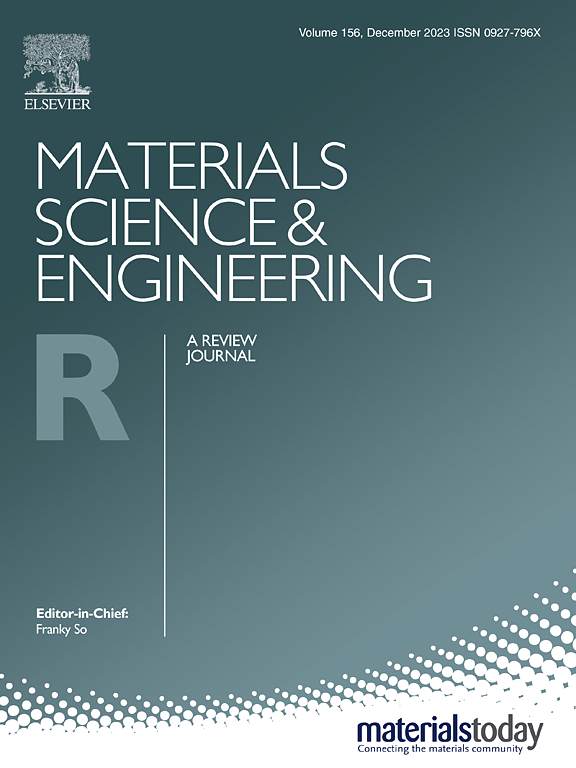Hybrid organic-inorganic functional nanocomposites: From basis to applications in stretchable sensing and energy devices
IF 31.6
1区 材料科学
Q1 MATERIALS SCIENCE, MULTIDISCIPLINARY
引用次数: 0
Abstract
Hybrid organic-inorganic functional nanocomposites are crucial in advancing electronics, biomedicine, and environmental science. These multifunctional and multiphase systems combine flexibility and stretchability with a broad spectrum of functional properties. This review delves into the fundamental (di)electric, thermal, and mechanical properties of these materials; the recent developments in their design and processing; and their application in strain, pressure, thermal sensing, energy harvesting, and energy storage. First, emphasis is placed on the role of nanofiller dimensions, spatial distribution, and interface interactions in enhancing material functionalities through meticulous control of the filler loading described by the universal percolation theory. Then, essential stages in nanocomposite fabrication, such as dispersion and deposition, are explored, as those significantly affect final properties. Finally, the review examines reported applications in stretchable electronics, such as mechanical sensors (piezo- and thermoresistive), energy harvesters (photovoltaic, piezoelectric, and thermoelectric), and energy storage devices (nanodielectric and electrochemical). Design strategies to balance functionality and stretchability are discussed, providing a roadmap for future research and development in this vibrant field.
杂化有机-无机功能纳米复合材料:从基础到在可拉伸传感和能源器件中的应用
杂化有机-无机功能纳米复合材料在推进电子、生物医学和环境科学方面具有重要意义。这些多功能和多相系统将灵活性和可拉伸性与广泛的功能特性相结合。这篇综述深入研究了这些材料的基本(di)电、热和机械性能;它们的设计和加工的最新发展;以及它们在应变、压力、热传感、能量收集和能量储存方面的应用。首先,重点放在纳米填料尺寸、空间分布和界面相互作用的作用上,通过对普遍渗透理论所描述的填料载荷的细致控制来增强材料的功能。然后,探讨了纳米复合材料制备的关键阶段,如分散和沉积,因为它们会显著影响最终性能。最后,回顾了在可拉伸电子领域的应用报告,如机械传感器(压电和热阻)、能量采集器(光伏、压电和热电)和能量存储设备(纳米介电和电化学)。讨论了平衡功能和可拉伸性的设计策略,为这个充满活力的领域的未来研究和发展提供了路线图。
本文章由计算机程序翻译,如有差异,请以英文原文为准。
求助全文
约1分钟内获得全文
求助全文
来源期刊

Materials Science and Engineering: R: Reports
工程技术-材料科学:综合
CiteScore
60.50
自引率
0.30%
发文量
19
审稿时长
34 days
期刊介绍:
Materials Science & Engineering R: Reports is a journal that covers a wide range of topics in the field of materials science and engineering. It publishes both experimental and theoretical research papers, providing background information and critical assessments on various topics. The journal aims to publish high-quality and novel research papers and reviews.
The subject areas covered by the journal include Materials Science (General), Electronic Materials, Optical Materials, and Magnetic Materials. In addition to regular issues, the journal also publishes special issues on key themes in the field of materials science, including Energy Materials, Materials for Health, Materials Discovery, Innovation for High Value Manufacturing, and Sustainable Materials development.
 求助内容:
求助内容: 应助结果提醒方式:
应助结果提醒方式:


